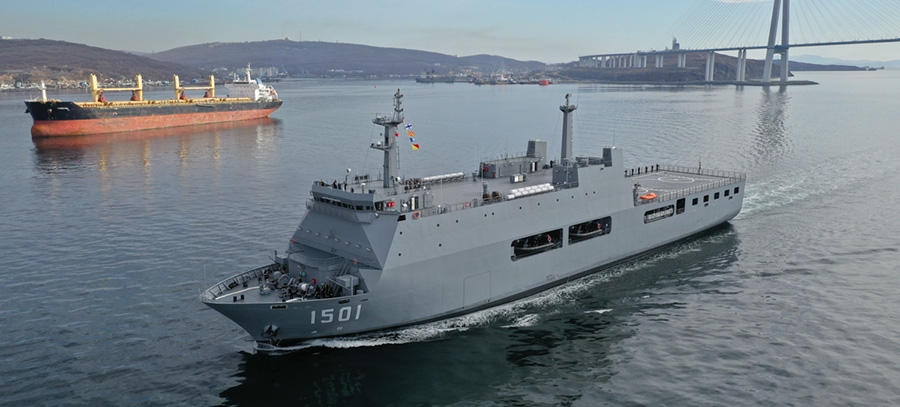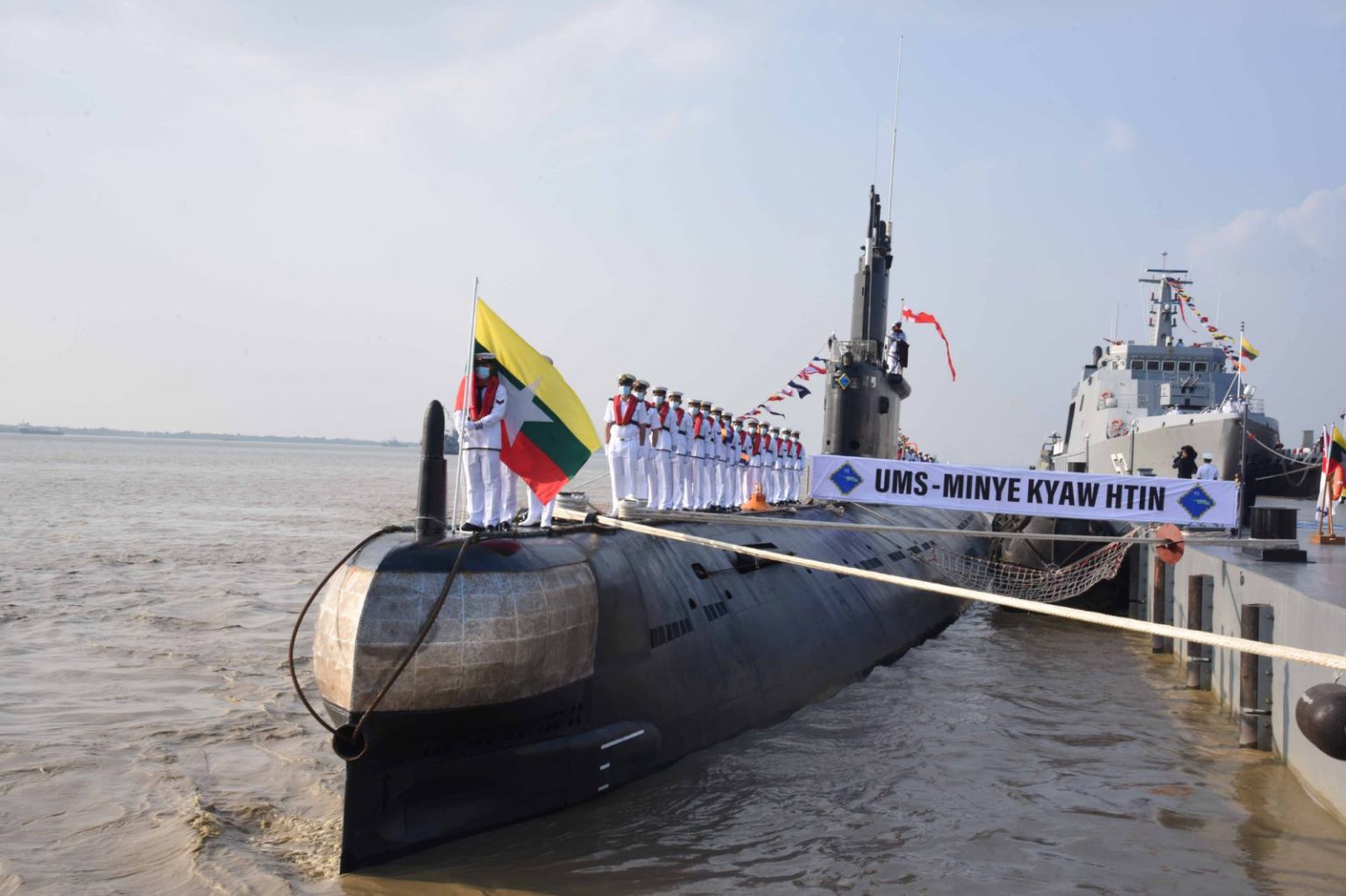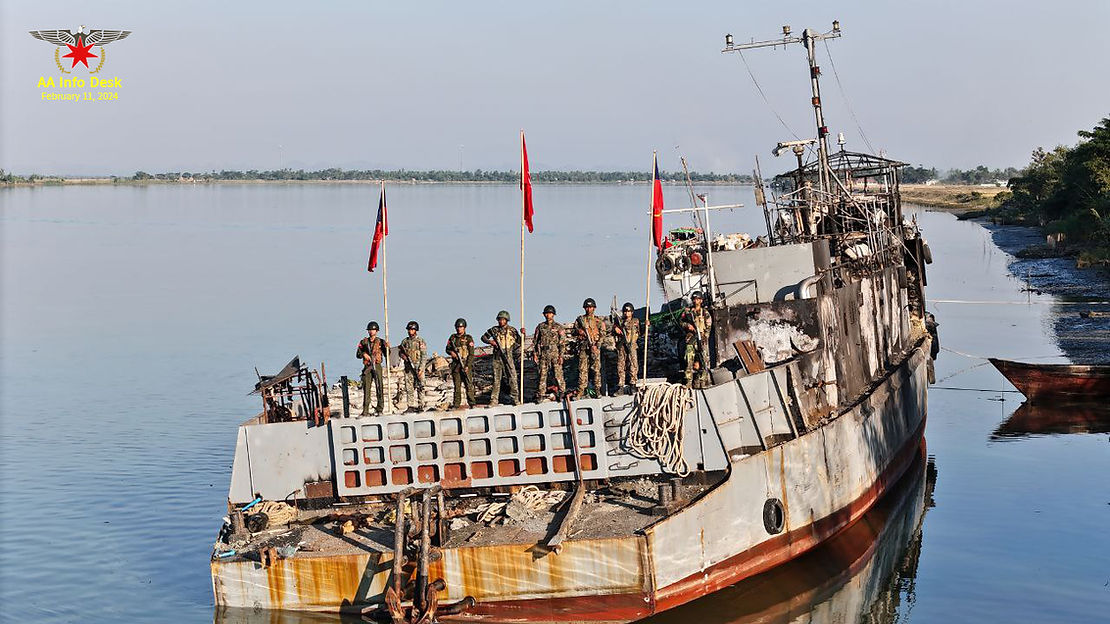
By Moe Sett Nyein Chan
Myanmar’s navy has played an insignificant role in the country’s decades-old civil wars since independence in 1948.
The navy has been barely deployed except in battles against the Communist Party of Burma and Karen National Union in the Ayeyarwady delta in the early years of the civil war.
The navy
The navy was established after independence in 1948 but remained modest until an expansion in the 1990s. It reportedly now has 19,000 sailors and 122 vessels, including two submarines and four frigates.
The navy has five naval regional commands based in Yangon, Mawlamyine in Mon State, Kyaukphyu in Rakhine State, Haiggyi Island in Ayeyarwady Region and Myeik in Tanintharyi Region.
The navy lacks combat experience and is limited to joint military exercises off the Rakhine coast.
Navy’s areas of operation

The navy patrols the coast of Tanintharyi and Rakhine and along the Ayeyarwady, Chindwin and Salween rivers and in the Ayeyarwady delta.
It has been of limited use to the regime in Tanintharyi Region since the 2021 coup, where resistance attacks have taken place inland.
In Mon and Karen states, the Salween can be used to shell anti-regime forces should they attack Mawlamyine and Hpa-an.
The Rakhine coast is ideal for naval warfare with large rivers, including the Nat, Mayu, Kaladan, Lemyo, Thanzit and Kaleintaung, that flow from the Himalayan foothills into the Bay of Bengal.
When the navy previously fought the Arakan Army (AA), ships were used to provide fire support, deliver weapons and food as well as impose blockades.
The Danyawaddy naval command in Kyaukphyu has a submarine base and a naval fleet is based at Sane in the township.
Before fighting broke out in Rakhine State in November last year, the AA was no threat to the regime’s naval bases and the navy was a strategic asset over the armed group.
Recent Rakhine fighting

Since fighting broke out in Pauktaw on November 16, naval ships have sent reinforcements and supplies and provided fire support.
However, the navy does not have separate combat forces, like marines, to launch naval operations. It does have a special unit like Navy Seals but they have not yet been spotted in operations.
Three naval boats carrying the 9th Military Operations commander, junta soldiers and their families, who were retreating from Kyauktaw, were sunk near Apaukwa village on the Kaladan by the AA on February 8.
The AA then blocked four junta rescue vessels, despite continuous strafing and bombing by junta helicopters.
Reports said around 700 junta soldiers and their relatives were killed when the three vessels sank. Video on social media showed the 9th Operations commander and others being rescued by AA troops from the water.
The AA sank another regime boat in Minbya Township on February 12.
According to the AA, the boat had been bombing Minbya villages for years. The armed group sank another junta boat in Minbya the following day.
It said five boats, including two barges, were destroyed from February 7-13 and four other vessels were badly damaged.
The Rakhine front

The loss of several naval boats in less than a week was a blow to the regime.
Since February 8, the regime has used helicopters to move junta families to Sittwe and naval vessels have been absent from Rakhine rivers.
The navy reportedly believes the AA used naval mines to sink its boats.
The navy has committed war crimes along Rakhine State rivers since 2019 with shelling of villages and its sailors looting and torching houses.
This has stopped since February 8 and ground forces have retreated into the state capital, Sittwe, Ann, Kyaukphyu and Thandwe.
Sittwe is the seat of the junta’s administration in Rakhine where the military’s Western Command is based. Kyaukphyu has a major China-backed special economic zone and deep-sea port project. Thandwe has the famous Ngapali beach resort.
The military sees its air force and navy as offering a clear advantage over anti-regime forces but several planes have recently been shot down. Junta sympathizers describe these crashes as accidents.
The navy is now also feeling the heat.
Figures about naval size and weaponry might look impressive on paper but its combat capability tells a different story.
The sinking of vessels last month marks the navy’s first defeat since independence.
The battles show the importance of technology in combat but also the significance of high morale and combat capability.
The naval role in Rakhine State has been limited to shelling unarmed civilians and it is unlikely to be able to do more than that in the future.
